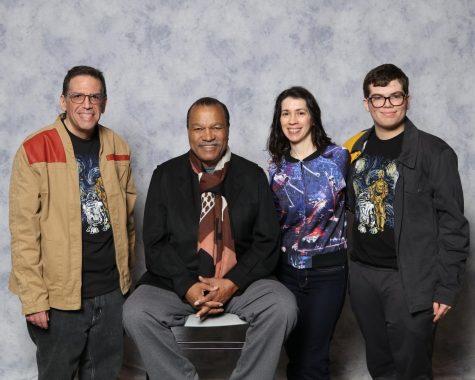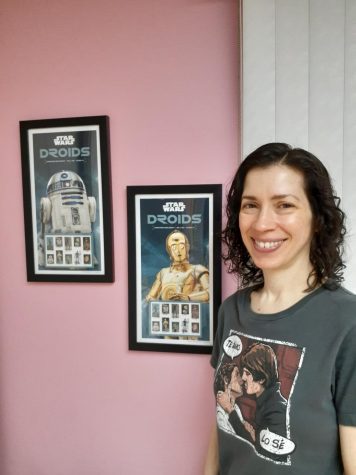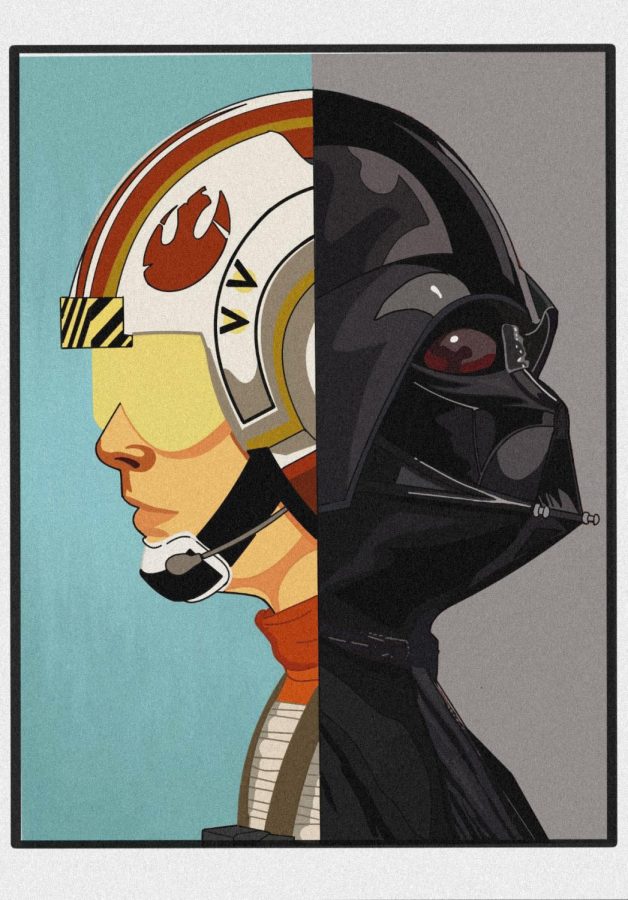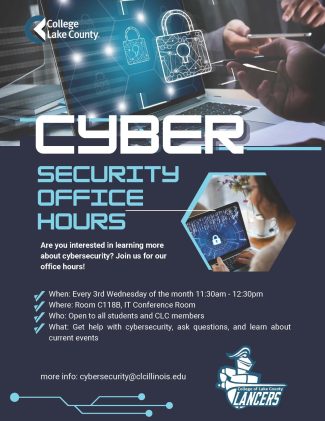CLC professors to present Star Wars research at the Dunn Museum
April 13, 2022
CLC professors John and Maria Jose Tenuto have been studying pop culture for years, and their current project has been a long time coming: six years in the making, to be exact. The Tenutos have been amassing tons of research on the Star Wars franchise, specifically in its infancy from 1977 to 1983.
This is not their first time deep-diving into the history of various pop culture staples, such as Star Trek and Star Wars.
“We’ve always been interested in subcultures. Being fans ourselves, we realized that there wasn’t a lot of research on fans of Star Wars. So, we thought that that would be an interesting topic to study,” said John Tenuto. “And then we started to be more interested in the making of them and the cultural implications because there [are] interesting stories that all have to do with sociology. So, we’re interested in the making of it, but really, a big part of it is the cultural influence. What has Star Wars done? How has it influenced and shaped the culture?”
“The research also corrects the narrative that you see in the media, which portrays fans as unlovable people in their parent’s basement, no job, no social life, and that’s so far from the truth,” added Maria Jose Tenuto.
The six years that the pair have spent conducting research have been filled with new discoveries and the need for adaptation, especially due to the 2020 pandemic.
“It’s mostly just us, and that’s sometimes difficult,” said Maria Jose Tenuto. “But people love talking about Star Wars, so we never have a hard time talking to anyone about that. And oftentimes when you are talking to someone, they’ll say, ‘You should also talk to so and so,’ and so we’ve made some good connections that way, as well as just through old-fashioned research.”

“Luckily, because of zoom and the databases that are out there, we were still able to continue our research despite the pandemic,” added John Tenuto.
During their research, one difference they found between the initial release of Star Wars and the franchise we know today was the lack of merchandise to go along with the movie.
“Movies did not get merchandise very frequently, nothing really extensive,” said John Tenuto. “Kenner Toys did make a deal with Lucasfilm very close to the film’s release, and they did this because they thought that even if the film wasn’t successful, the toys would look cool and they would sell on their own. So for Christmas 1977, all kids got at Christmas time was an envelope from Kenner with the promise that their parents had ordered figures that were going to come sometime almost a year after the movie came out. And in many ways, we’ve found from our research that that’s one of the reasons why Star Wars endured – because it was so unexpected; every kid wanted a Star Wars toy, but those kids had to wait. And that anticipation kept going and going until you got it, and all of a sudden that toy became a treasure.”
“Once the movie came out, everybody realized how popular and successful it was, and everybody wanted a license because it was like a license to print money. And so the first collectibles that came out were things that could be made quickly, like t-shirts and paper-based products like posters, stickers, trading cards, and board games,” said Maria Jose Tenuto.
Star Wars was a national hit and very well received by the press upon its release.
“Even people who didn’t like science fiction or space fantasy went to see it because it was a fairytale, it was an archetypal story, and everybody could understand that. But I also think that visually, there was nothing like it,” said John Tenuto. “There was never a dogfight on-screen before between spaceships. You only thought you saw dogfights before, in other words, two ships battling each other. If you watched Star Trek or some other movie, you would see a ship, and it would fire, then they’d cut to the other ship, and it would fire. You never saw something that looked like an actual battle between ships before. And it took the culture by such surprise that the initial reaction was very, very positive.”
Although the film was well-received by the press, they had no idea what to make of Star Wars fans.
“If you look at the headlines, they described them as being insane, being crazy, having a sort of fever. So the headlines make it seem negative, but the articles would be generally positive. That was what we refer to as clickbait today, and the headlines were bait to get you to read the article,” said Maria Jose Tenuto.

Over time, the reception and cultural significance of the Star Wars franchise has evolved with the times and fanbase but has stood its ground as a pop-culture staple.
“In 1977, it was like a meteor strike on the culture. It left this big indelible mark that’s still with us today. Concepts like saying “the dark side” came from Star Wars, and that’s come into our normal conversation,” said John Tenuto. “There was also an influence on technology, robotics, and medicine. What was science-fictiony in 1980, like Luke Skywalker having a robotic hand, is real now. Everybody’s a tech geek; we all have smartphones, [and] we all are into technology, but that was not the way it was. To have been a kid who liked science, you were strange, and to like science fiction, you were even worse. Star Wars helped to make that kind of cool.”
“I think it also caught on so quickly because when you look at the 1970s and what was going on in society, the economy was bad, inflation was high, unemployment was high, there was a gas crisis, and you had the losses in Vietnam,” said Maria Jose Tenuto. “So there’s a lot of bad things happening, and then you have this movie that comes out that is uplifting, the good guys win, and it’s very easy to understand. There’s a definite good side and bad side, and that’s something the culture needed.”
“From a pop culture point of view, Star Wars changed everything,” said John Tenuto. “It changed cinema, the concept of a blockbuster, the summer movie, and merchandising. We didn’t have kids growing up with a common mythology, and Star Wars came along and gave that to us, and as it grew it became more diverse and inclusive.”
Throughout their research, John and Maria Jose have compiled all sorts of information about the films, including many interesting details from behind the scenes.
“There’s happy stories and sad stories and really human stories about the making of the movie. I think perhaps one of the saddest stories is how the sculptor of C3PO, Liz Moore, died in a car accident pretty soon after they started filming. She never got to see this amazing thing she created become a part of the iconic representation of Star Wars,” said John Tenuto.
“They also had challenges with the weather,” he added. “They filmed in Tunisia during the biggest sandstorm, and the temperatures were over 100 degrees, with people in very heavy costumes with masks. And then they juggled the logistics of shooting in Africa, in England, and then in Norway during a massive snowstorm. For instance, when you see Luke Skywalker in The Empire Strikes Back running through the snow, and you think he’s in the middle of nowhere, they actually had Mark Hamill go outside their hotel, and they were just in the hotel doorway, filming him through the blizzard.”
To celebrate their hard work and dedication, the two will be presenting their research this summer at the Dunn Museum as a part of a larger exhibit highlighting the artwork of comic book artist Bill Sienkiewicz.
“We’re trying to give people an idea of what it was like in 1977 when Star Wars first came out and to remind people who were originally part of it. And we want to give newer fans who are coming in with shows like The Mandalorian an idea of what it was like in the old days,” said John Tenuto.
Information to attend will be coming soon on the Dunn Museum website for any interested students. The event will be presented virtually on August 18th at 6 o’clock.







